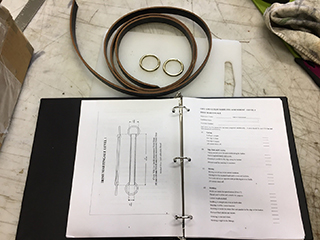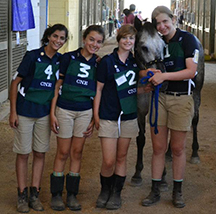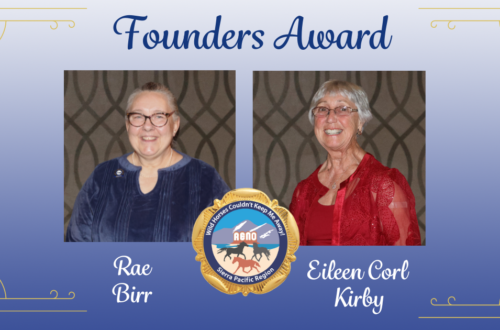
Tales of a Pony Club Saddlemaker-in-Training

Adrienne Hendricks, H-A graduate, Boise Pony club, in the Intermountain Region has agreed to blog her journey as an Apprentice Saddle Maker. Follow along as Adrienne shares her highs and lows of becoming a Master Saddler
Hello! I am an Apprentice Saddle Maker and Pony Club (PC) has invited me to share my journey in preparing for my exams in early 2018. I have loved horses my whole life and achieved my H-A before heading off to college. I especially loved the Horse Management side of PC and thrived in Stable Management. Mom used to joke that my tack room was immaculate however my bedroom was a disaster. So true! Well I had a few years away from riding…went to college, had a career as a banker and a stockbroker and found a new career 10 years ago…Saddle Making.
Upon returning to riding, I found it hard to get my tack worked on locally as there are not many tack repair shops and the few we have are very busy. It was going to take 2 months to get my flash noseband adjusted. My dad and I have always worked with leather and I had never thought to work on my own tack. I talked with my Dad about how to approach it and we managed to adjust the buckle on my flash noseband and I was hooked! Next I made a pair of galloping boots and thus this journey began.
A few years ago I reached out to one of the English Master Saddlers here in the US, Suzie Fletcher-Baker. After sending her examples of my work and quite a bit of discussion about how it would literally be “blood, sweat and tears”, she agreed to take me on as her apprentice. I have been making week long trips to Colorado for the past few years to work in her shop. We also Skype and FaceTime frequently as well. I am currently preparing to travel to England in about a year to take my exams to become a recognized Saddler by the Society of Master Saddlers in England. The process is similar to PC certifications. There are certain items that are expected to be made that cover a variety of skills that are to have been learned and mastered. Then items are then reviewed and there is a list of specific criteria that must be meet with passing scores.

I am starting with the first of my practice pieces, an Irish Martingale. In the photo below, you can see the pieces that I am getting ready to work and the specifications that I am to follow.

One of the things I never realized is that most of the stitching you see on your tack is done by hand. The main skills used for making this Irish Martingale focus on those needed for hand stitching. They are edging, creasing, prick marking, edge preparation and obviously hand stitching. I’ll try to show examples of what each of those are in the future. Basically they are all skills that are used on about every piece of leather that gets prepped to use for tack.
As you can see in my finished product below, I have lots of practice to do! Hand stitching reminds me of bandaging, it needs to be practiced A LOT. And then you need to keep doing it to keep your skills up. Basically the stitches should all be lined up and look like they were done on a sewing machine. They should be in a straight line, all even, angled the same direction and not look like my friend said, “It looks homemade!” It should look like it came off of a sewing machine. Anyway….I know one area I need to practice, LOTS!





